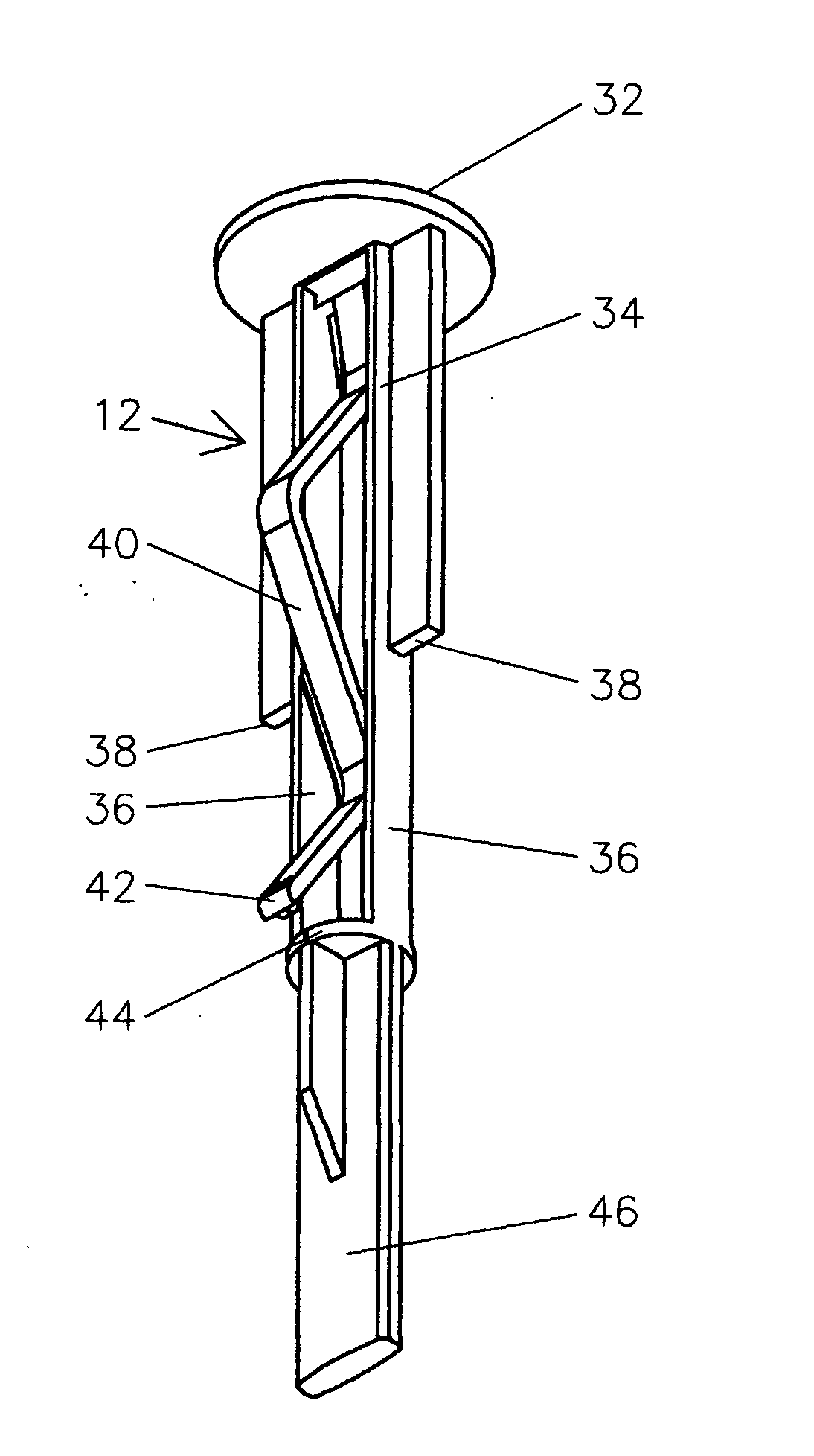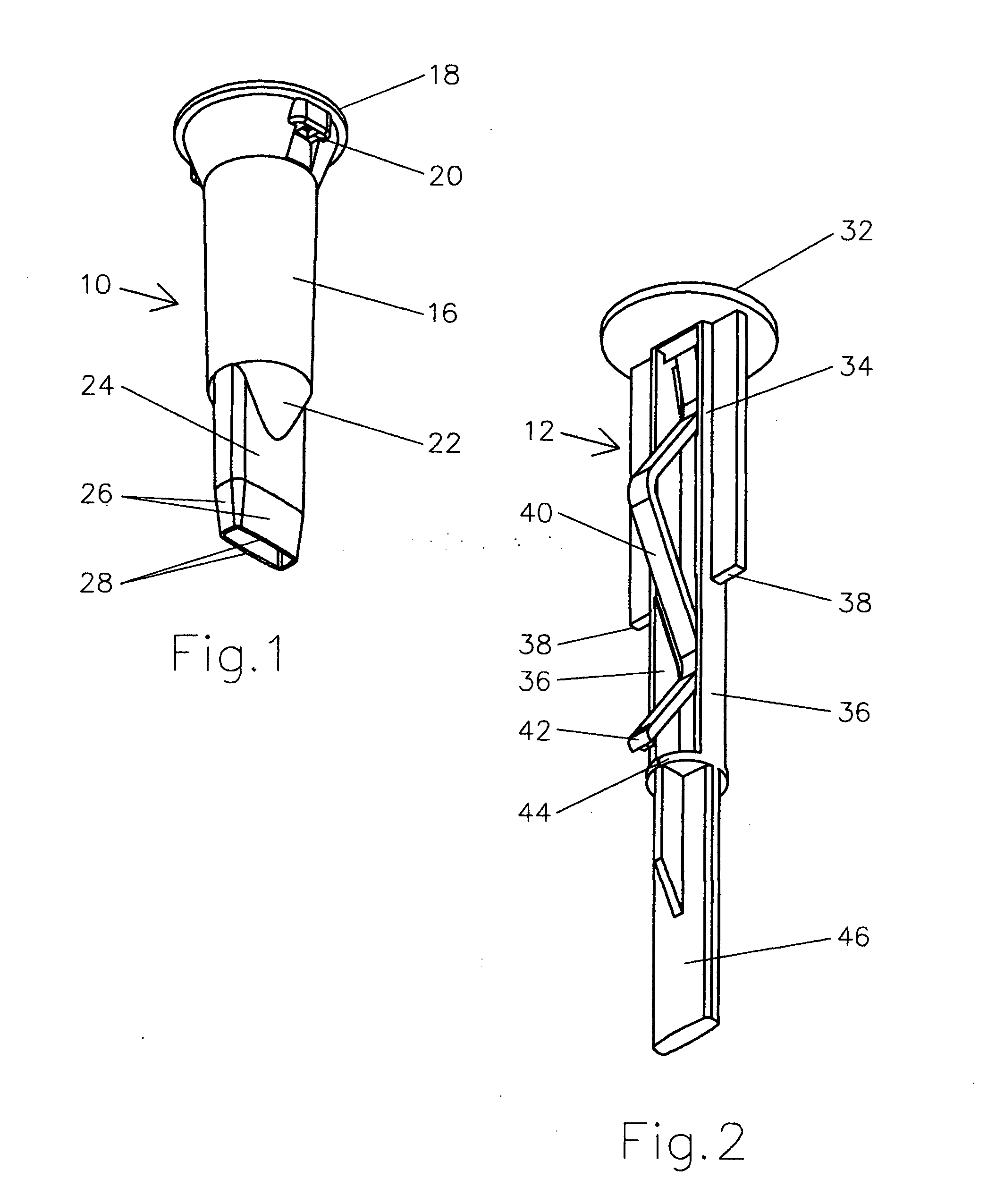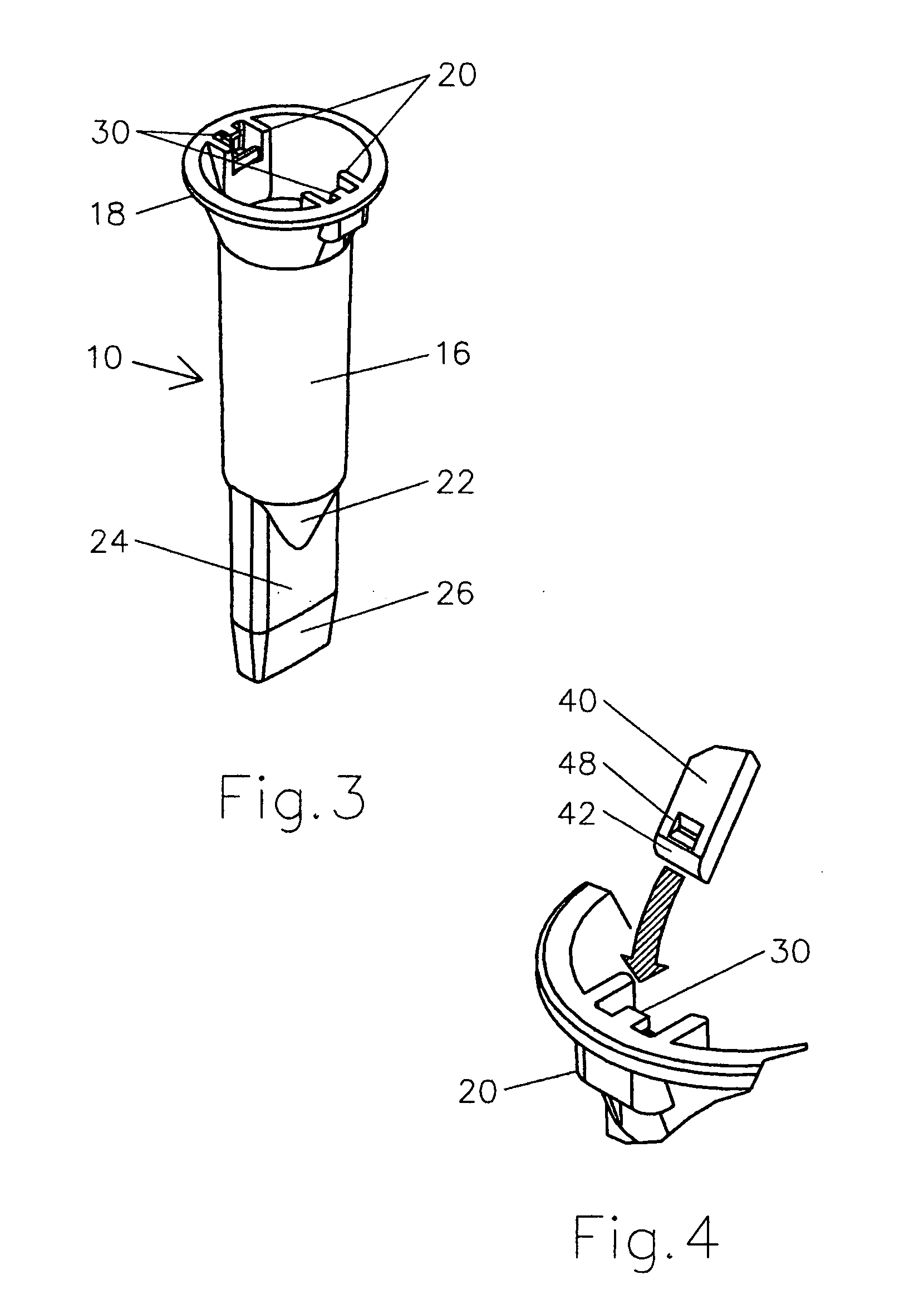Gel extraction device
a gel extraction and gel technology, applied in the field of biotechnology, can solve the problems of significant variations in the yield of dna purification, affecting the reproducibility of results obtained, and the technique of manual blades is susceptible to a high degree of technique related variability
- Summary
- Abstract
- Description
- Claims
- Application Information
AI Technical Summary
Benefits of technology
Problems solved by technology
Method used
Image
Examples
Embodiment Construction
[0040] Referring now to FIGS. 1 and 2 a gel extraction device is described wherein like reference numerals refer to like elements throughout. Also, mutually related components of the present invention are depicted in FIGS. 1 and 2. FIG. 1 illustrates a hollow cutting member 10 that receives a plunger ejector member 12 as illustrated in FIG. 2 to comprise the gel extraction device 14 shown fully assembled in FIG. 5. The hollow cutting member 10 has a proximal tubular body 16 terminating in a circular rim 18, having a pair of oppositely disposed spring engaging structures 20. At an end opposite to the circular rim 18, the hollow cutting member 10 proximal tubular body 16 tapers gradually into a sloped transition portion 22 ending in a rectangular receptacle 24 shaped to accommodate substantially rectangular shaped gel slices, the typical shape of bands of biomolecules obtained by electrophoresis. The rectangular receptacle 24 terminates in a tapered end portion 26 with a perimeter cut...
PUM
| Property | Measurement | Unit |
|---|---|---|
| thickness | aaaaa | aaaaa |
| angle | aaaaa | aaaaa |
| thickness | aaaaa | aaaaa |
Abstract
Description
Claims
Application Information
 Login to View More
Login to View More - R&D
- Intellectual Property
- Life Sciences
- Materials
- Tech Scout
- Unparalleled Data Quality
- Higher Quality Content
- 60% Fewer Hallucinations
Browse by: Latest US Patents, China's latest patents, Technical Efficacy Thesaurus, Application Domain, Technology Topic, Popular Technical Reports.
© 2025 PatSnap. All rights reserved.Legal|Privacy policy|Modern Slavery Act Transparency Statement|Sitemap|About US| Contact US: help@patsnap.com



